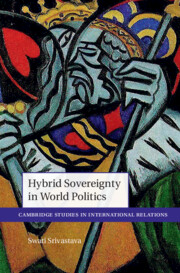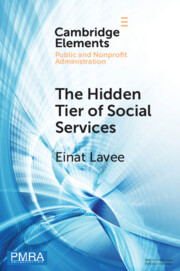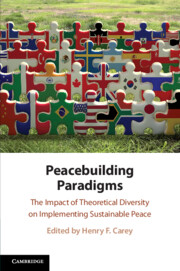71 results
Bioinspired planar switched beam network using Butler matrix on a flexible substrate targeting multifaceted millimeter-wave applications
-
- Journal:
- International Journal of Microwave and Wireless Technologies , First View
- Published online by Cambridge University Press:
- 02 April 2024, pp. 1-11
-
- Article
- Export citation
Acute kidney injury in hypoplastic left heart syndrome patients following the comprehensive stage two palliation
-
- Journal:
- Cardiology in the Young / Volume 34 / Issue 3 / March 2024
- Published online by Cambridge University Press:
- 11 August 2023, pp. 552-558
-
- Article
- Export citation
The myxozoan parasite Myxobolus bejeranoi (Cnidaria: Myxozoa) infection dynamics and host specificity in hybrid tilapia aquaculture
-
- Journal:
- Parasitology / Volume 150 / Issue 6 / May 2023
- Published online by Cambridge University Press:
- 10 March 2023, pp. 524-530
-
- Article
-
- You have access
- Open access
- HTML
- Export citation
14 - Lyric, Essay
- from Part III - Technologies of the Essay
-
-
- Book:
- The Cambridge Companion to The Essay
- Published online:
- 27 October 2022
- Print publication:
- 03 November 2022, pp 215-228
-
- Chapter
- Export citation
7 - Conclusions on Power and Responsibility in Hybrid Sovereignty
-
- Book:
- Hybrid Sovereignty in World Politics
- Published online:
- 01 September 2022
- Print publication:
- 08 September 2022, pp 229-240
-
- Chapter
- Export citation
Introduction
-
- Book:
- Hybrid Sovereignty in World Politics
- Published online:
- 01 September 2022
- Print publication:
- 08 September 2022, pp 1-11
-
- Chapter
- Export citation
1 - Hybrid Sovereignty in International Theory
-
- Book:
- Hybrid Sovereignty in World Politics
- Published online:
- 01 September 2022
- Print publication:
- 08 September 2022, pp 12-39
-
- Chapter
- Export citation
2 - Ideal-Types of Public/Private Hybridity
-
- Book:
- Hybrid Sovereignty in World Politics
- Published online:
- 01 September 2022
- Print publication:
- 08 September 2022, pp 40-69
-
- Chapter
- Export citation

Hybrid Sovereignty in World Politics
-
- Published online:
- 01 September 2022
- Print publication:
- 08 September 2022

The Hidden Tier of Social Services
- Frontline Workers' Provision of Informal Resources in the Public, Nonprofit, and Private Sectors
-
- Published online:
- 01 August 2022
- Print publication:
- 18 August 2022
-
- Element
- Export citation
A review of source models to further the understanding of the seismicity of the Groningen field
- Part of
-
- Journal:
- Netherlands Journal of Geosciences / Volume 101 / 2022
- Published online by Cambridge University Press:
- 27 May 2022, e11
-
- Article
-
- You have access
- Open access
- HTML
- Export citation
Dual-solver hybrid computational approaches for design and analysis of vertical lift vehicles
-
- Journal:
- The Aeronautical Journal / Volume 126 / Issue 1295 / January 2022
- Published online by Cambridge University Press:
- 03 December 2021, pp. 187-208
-
- Article
- Export citation
4 - Graphic Fiction
- from Part I - Forms
-
-
- Book:
- The Cambridge Companion to Twenty-First Century American Fiction
- Published online:
- 02 September 2021
- Print publication:
- 23 September 2021, pp 79-99
-
- Chapter
- Export citation
Chapter 13 - The Slave, Between Absence and Presence
- from Part III - Going Beyond
-
-
- Book:
- Unspoken Rome
- Published online:
- 03 September 2021
- Print publication:
- 16 September 2021, pp 239-249
-
- Chapter
- Export citation
Chapter 7 - A Hybrid Defense of the Legislative Perspective
- from Part II - Contemporary Approaches to the Rule-Consequentialist Paradox
-
- Book:
- Morality as Legislation
- Published online:
- 29 July 2021
- Print publication:
- 12 August 2021, pp 190-216
-
- Chapter
- Export citation
5 - Changing Topographies, New Feminisms, and Women Poets
-
-
- Book:
- The Cambridge Companion to Twenty-First-Century American Poetry
- Published online:
- 25 February 2021
- Print publication:
- 11 March 2021, pp 71-89
-
- Chapter
- Export citation
17 - Peacebuilding Paradigm from the Perspective of Policy Approach
- from Part VII - The Policy Paradigm
-
-
- Book:
- Peacebuilding Paradigms
- Published online:
- 16 December 2020
- Print publication:
- 17 December 2020, pp 287-303
-
- Chapter
- Export citation
5 - Conflict Prevention and Management
- from Part II - The Liberal Paradigm
-
-
- Book:
- Peacebuilding Paradigms
- Published online:
- 16 December 2020
- Print publication:
- 17 December 2020, pp 94-108
-
- Chapter
- Export citation

Peacebuilding Paradigms
- The Impact of Theoretical Diversity on Implementing Sustainable Peace
-
- Published online:
- 16 December 2020
- Print publication:
- 17 December 2020
Seed germination ecology of meadow knapweed (Centaurea × moncktonii) populations in New York State, USA
-
- Journal:
- Weed Science / Volume 69 / Issue 1 / January 2021
- Published online by Cambridge University Press:
- 03 December 2020, pp. 111-118
-
- Article
- Export citation



